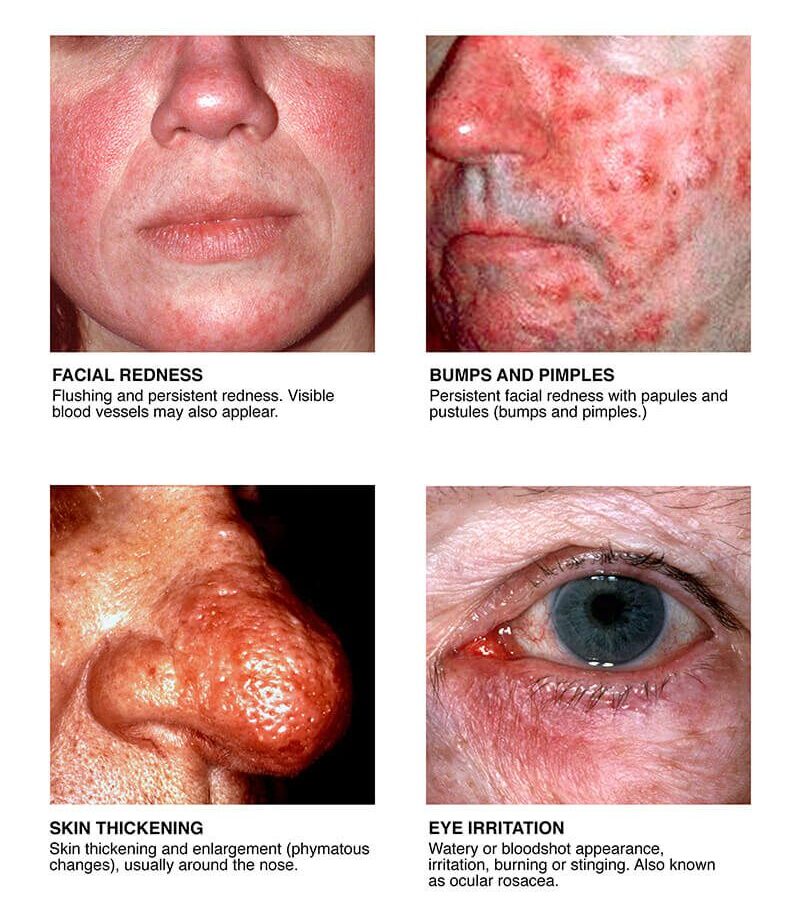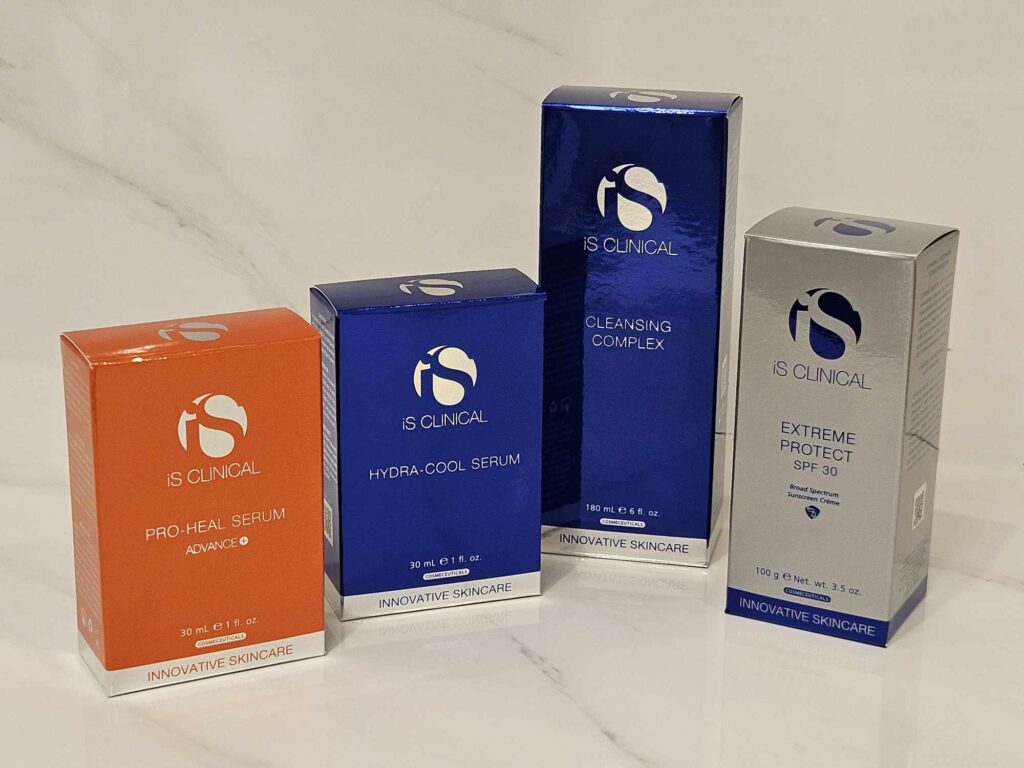April Is Rosacea Awareness Month
Over 400 million people worldwide have rosacea. For over 30 years, the National Rosacea Society have designated April as Rosacea Awareness Month to educate, raise awareness and reduce stigma about this chronic and complex skin condition.
For Rosacea Awareness Month 2024, we are highlighting the importance of skin care in rosacea treatment. Prior to diagnosis, many rosacea sufferers may turn to skin care products and makeup to treat or cover up these signs and symptoms, mistaking them for a temporary condition like sunburn or acne. The use of gentle cleansers, moisturizers and sunscreens can work to support and even augment medical therapy for the disease.
But What Is Rosacea?
Rosacea is a chronic but treatable skin condition that primarily affects the central face and is often characterized by flare-ups and remissions. Although rosacea may develop in many ways and at any age, patient surveys indicate that it typically begins any time after the age of 30 as flushing or redness on the cheeks, nose, chin or forehead that may come and go. Studies have shown that over time the redness tends to become ruddier and more persistent; visible blood vessels may appear. Left untreated, inflammatory bumps and pimples often develop, and in severe cases, particularly in men, the nose may grow swollen and bumpy from excess tissue. In as many as 50% of patients the eyes are also affected, feeling irritated and appearing watery or bloodshot.

Although rosacea can affect all skin types, individuals with fair skin who tend to flush or blush easily are believed to be at greatest risk. The disorder is more frequently diagnosed in women but tends to be more severe in men. There is also evidence that rosacea may tend to run in families and may be especially prevalent in people of northern or eastern European descent.
While the cause of rosacea is unknown and there is no cure, knowledge of its signs and symptoms has advanced to where they can be effectively controlled with medical therapy and lifestyle changes. Individuals who suspect they may have rosacea are encouraged to see us for a consultation and appropriate treatment at South Coast Aesthetic Clinic before the disorder becomes increasingly severe and intrusive on daily life.
How Is Rosacea Treated?
Because the signs and symptoms of rosacea vary from one person to another, treatment must be tailored by a practitioner on an individual basis. A range of oral and topical medication may be used to treat the various signs and symptoms associated with the disorder. Our Aesthetic Nurse Practitioner and Independent Nurse Prescriber Jolanta will advise on the most suitable medical therapy specifically to control the redness. Bumps and pimples often receive initial treatment with oral and topical therapy to bring the condition under immediate control, followed by long-term use of an anti-inflammatory therapy alone to maintain remission. When appropriate, our Microsclerotherapy treatment may be used to remove visible blood vessels or through the Radiofrequency Microneedling using the Sylfirm X machine we can reduce the redness.
Skin Care
Patients should check with their practitioner to ensure their skin care routine is compatible with their rosacea. A gentle skin care routine can also help control the condition. Patients are advised to clean their face with a mild and non-abrasive cleanser such as the iS Clinical Cleansing Complex, then rinse with lukewarm water and blot the face dry with a thick cotton towel. Never use a rough washcloth.
Patients may apply non-irritating skin care products as needed and are advised to protect the skin from sun exposure using a sunscreen that delivers UVA/ UVB protection with an SPF of 30 or higher. Mild or paediatric formulations are available for sensitive skin and look for non-chemical (mineral) sunscreens that contain zinc or titanium dioxide such as iS Clinical Extreme Protect or Heliocare Advanced Gel. Rosacea patients should avoid any skin care products that sting, burn or cause additional redness.
Makeup may be used to conceal the effects of rosacea. Green makeup or green-tinted foundations can be used to counter redness. This can be followed by a skin-tone foundation with natural yellow tones, avoiding those with pink or orange hues.

Lifestyle Management
In addition to long-term medical therapy, rosacea patients can improve their chances of maintaining remission by identifying and avoiding lifestyle and environmental factors (often related to flushing) that may trigger flare-ups or aggravate their individual conditions. Identifying these factors is an individual process, however, because what causes a flare-up in one person may have no effect on another.
To help identify personal trigger factors, rosacea patients are advised to keep a diary of daily activities or events and relate them to any flare-ups they may experience.
We Can Help!
At SCA Clinic we provide all the necessary advice, guidance, skin care products and treatments for rosacea and many other conditions. We’re just a phone call or email away. If you have any questions, queries, worries or wonderings, feel free to get in touch on 01202 736644 or [email protected]. We’re always more than happy to help.
